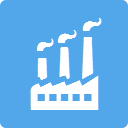Preliminary Fracking Study Boasts Promising Results
A recent federal study on hydraulic fracking has brought a small victory to the natural gas industry. The study, conducted by the National Energy Technology Laboratory in Pittsburgh, shows no evidence of chemicals from the natural gas drilling process contaminating drinking water aquifers at a western Pennsylvania drilling site.
After one year of monitoring, researchers found that potentially harmful drilling fluid chemicals have stayed approximately one mile beneath any drinking water supplies. This conclusion was reached by tagging drilling fluids with specific markers, and injecting them 8,000 feet into the ground. After closely tracking these fluids, it was ultimately concluded that they did not reach any higher than 3,000 feet below the surface.
This study is a first of its kind; never before has a drilling company permitted government scientists to monitor fracking fluids like this. However, the study is still ongoing and the results remain preliminary at this time. While the findings may be a boost of confidence for the natural gas industry, they do not mean that fracking can’t be a form of pollution.
Despite the promising results, reservations still linger. The fact remains that many aspects of the drilling process can cause pollution when not managed properly. Also, a lack of transparency by drilling companies in revealing certain chemical formulas often leaves the public feeling uneasy.
The preliminary results of this study will not erase the controversy surrounding fracking overnight, but they do pose a few important takeaways. For example, one such key point is that the best way to avoid possible danger and contamination from fracking is to engage in it responsibly, and continuously monitor water quality around drilling sites. This way if leaks do occur, they will be discovered early and contained. Early detection of water contamination is just as crucial as it is with many debilitating diseases. With early detection a cure could be quick and simple, whereas if it goes undetected, the chances of a positive outcome diminish with time. A similar analogy holds true for subsurface water contamination as well.
When it comes to fracking, monitoring for leaks is key and a small price to pay in order to guarantee the protection of our water resources. Designing a comprehensive monitoring program to ensure the proper management of applicable fluids and chemicals is critical for natural gas drilling. With the swift advancements in technology today, companies engaging in fracking are able to take advantage of state-of-the-art software systems, such as Locus’, to assist with the tracking and organization of this pertinent information. The more that this takes place, the more secure we will all be from the potential negative effects of fracking.




Leave a Reply
Want to join the discussion?Feel free to contribute!